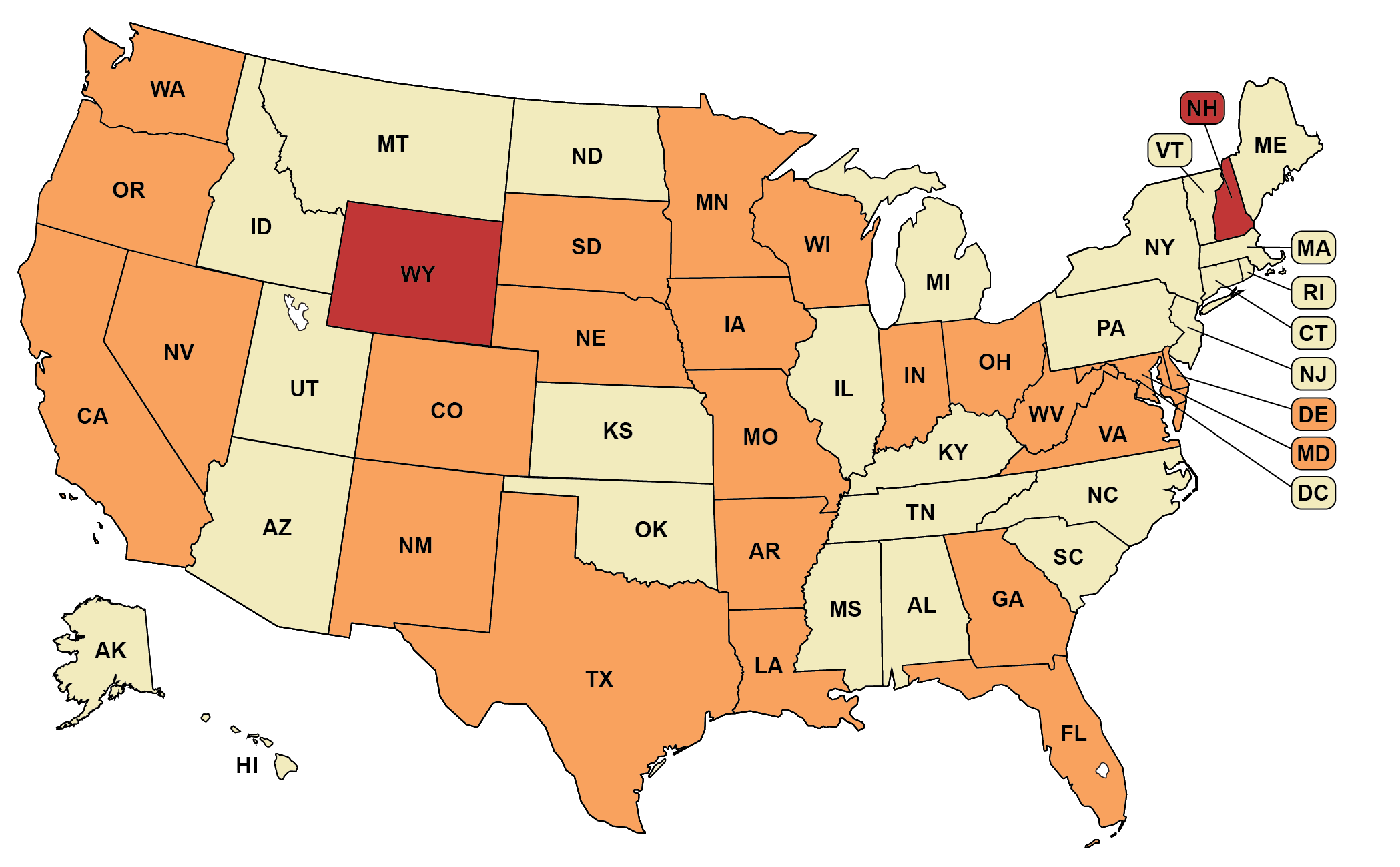3rd party voter registration drives are often non-partisan, community efforts that encourage and assist people in registering to vote. While almost all states allow voter registration drives, some ban them entirely, and a number of states have implemented restrictions that operate to unduly burden these efforts. Such restrictions include requiring groups to register and or complete (often burdensome) training through the state as well as implementing deadlines which require completed applications to be returned before the general registration deadline.
-
State does not allow voter registration drives
(2 states)
-
State restricts voter registration drives
(24 states)
-
State does not restrict voter registration drives
(24 states + D.C.)
*Note: North Dakota does not require voter registration.
Recommended citation: Movement Advancement Project. "Restrictions on 3rd Party Voter Registration Drives" https://www.mapresearch.org/third_party_voter_registration_drives. Accessed [day of access]
Breakdown by Population
*Note: These percentages reflect the voting-eligible population, as reported by the United States Election Project.
1 % of population lives in states that do not allow registration drives
59 % of population lives in states that restrict registration drives
40 % of population lives in states that do allow registration drives


